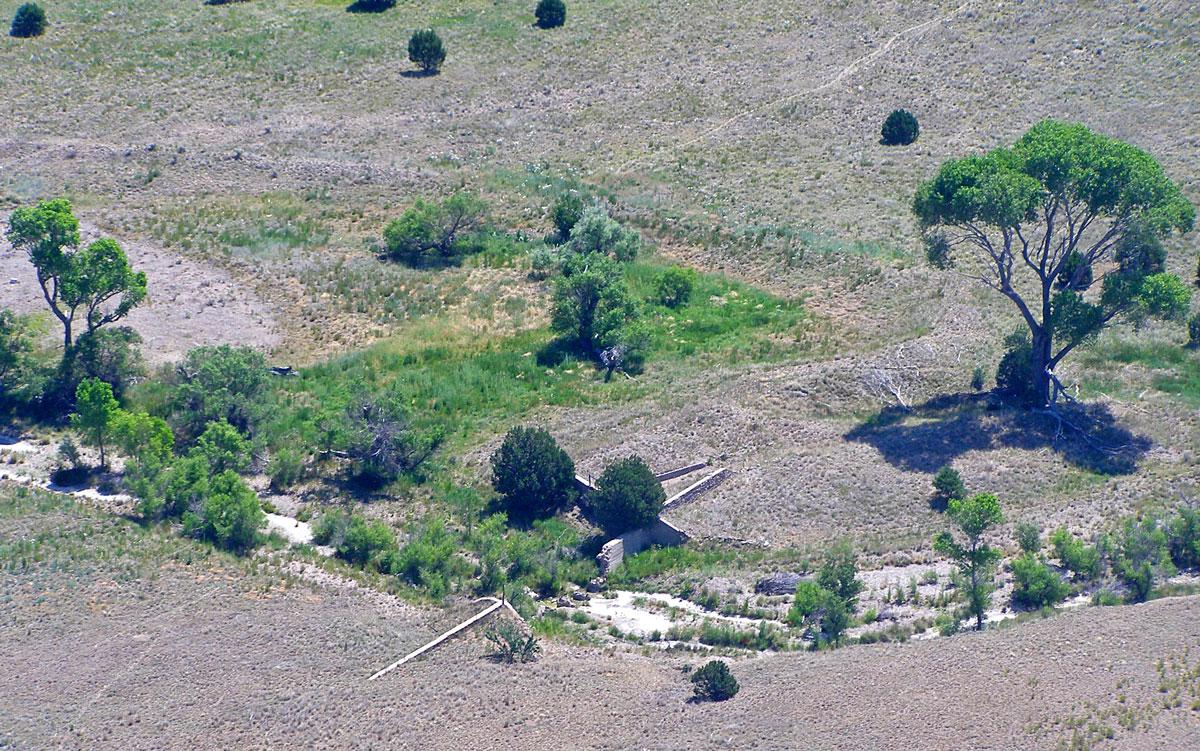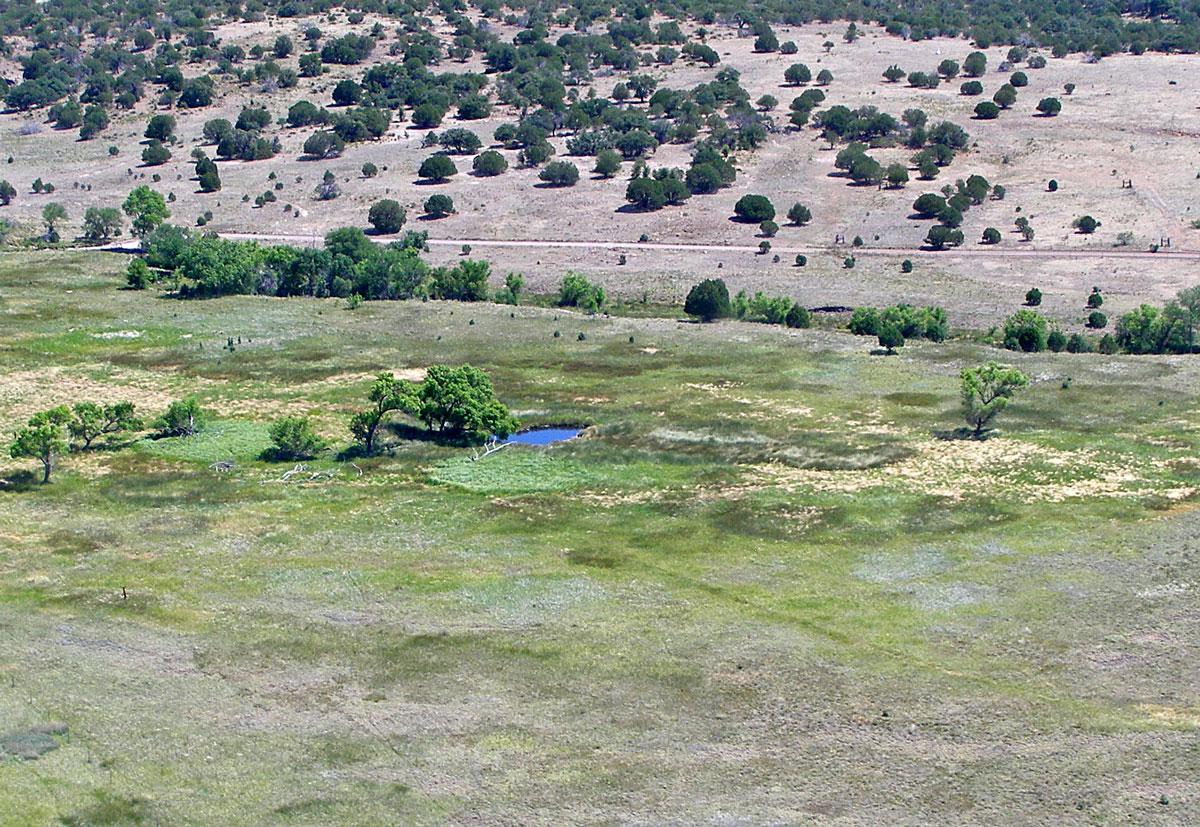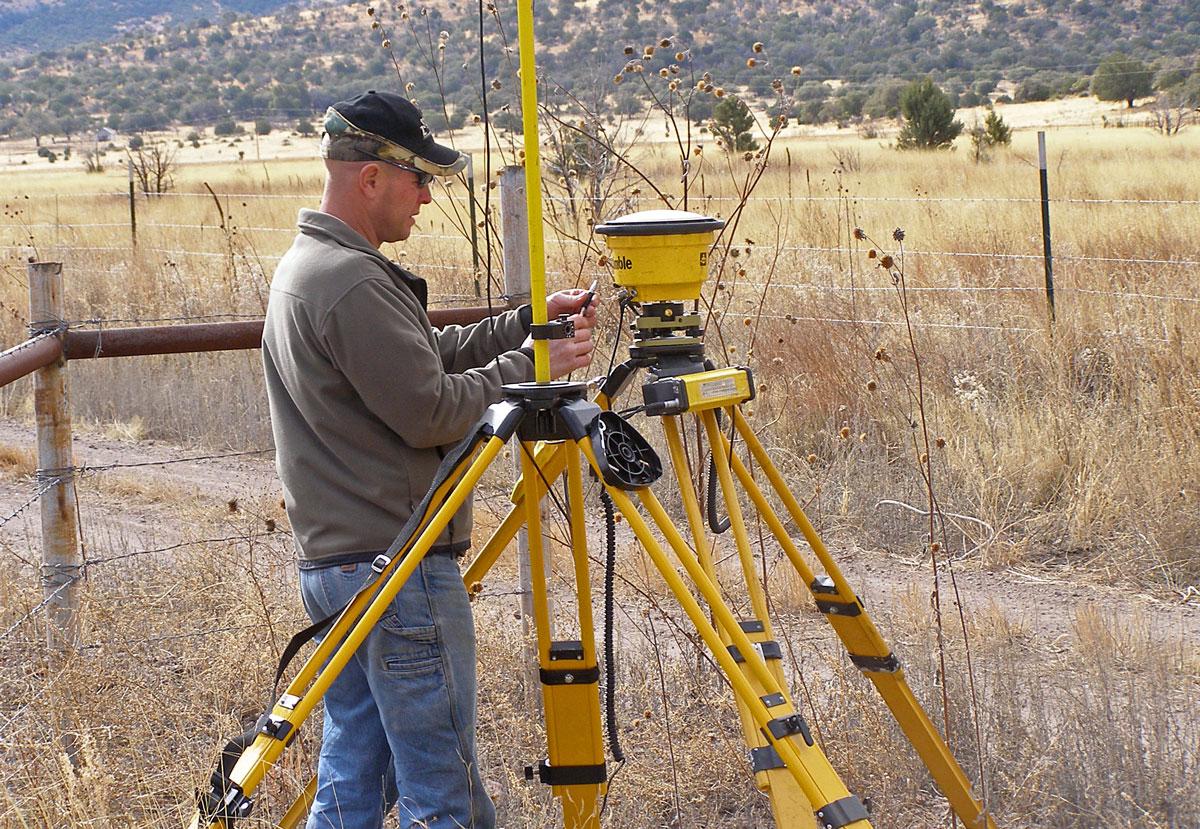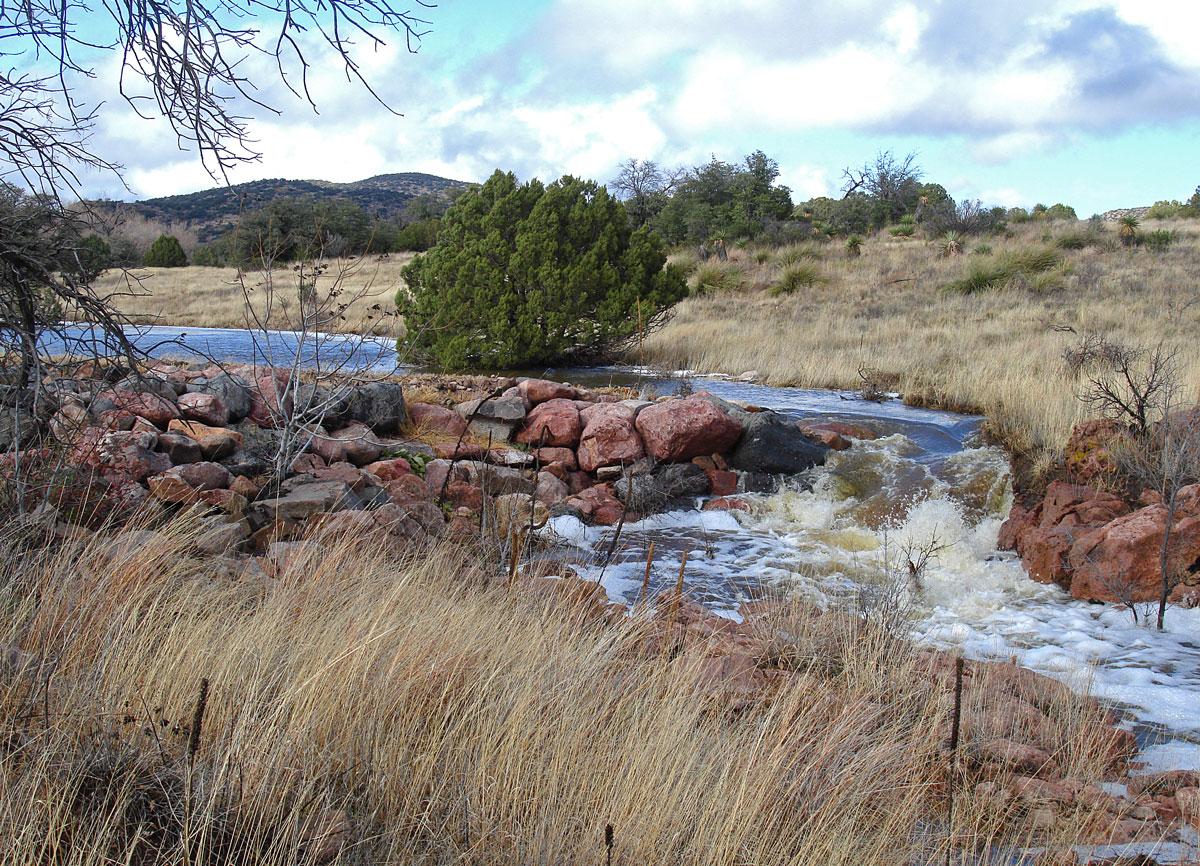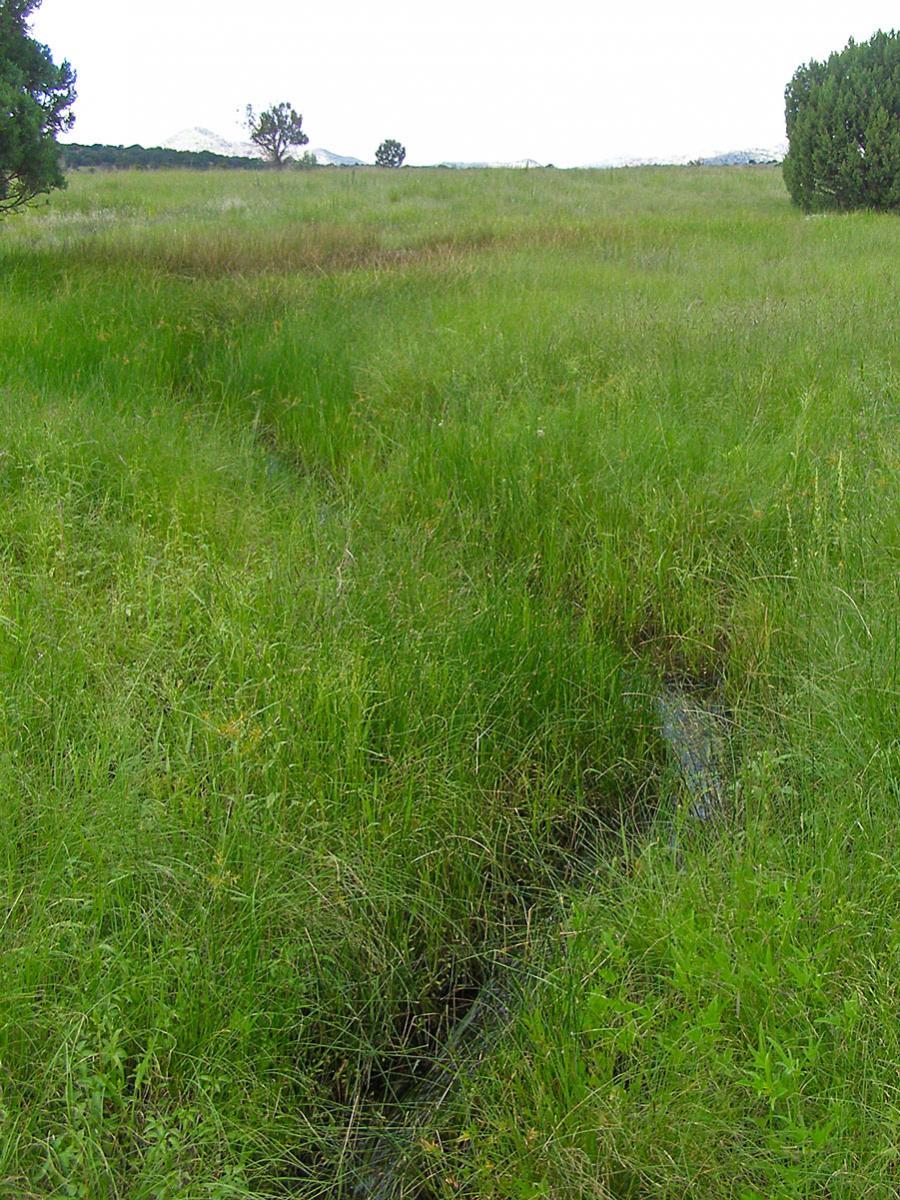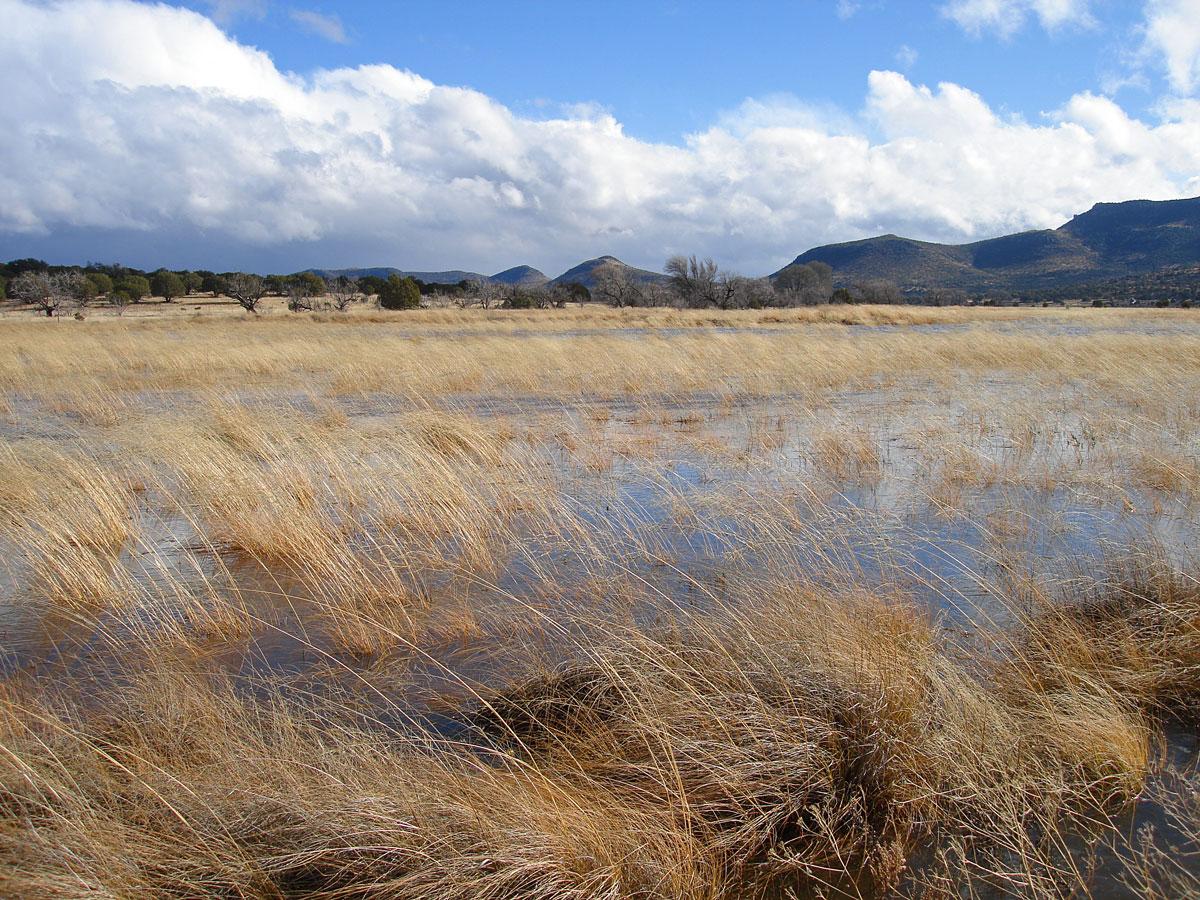Stream Dynamics worked with Sky Island Alliance and other partners and are in the final phases of restoration planning and implementation for the ciénega and creek that occupy the upper Cloverdale Valley. Due to large-scale man-made diversions and levees this project has proved complex but we are confident our current restoration design will achieve the outcomes and goals of the grant proposal and work plan. To continue the work to restore Cloverdale Creek and the two ciénegas associated with it we must look at the whole system. The lower creek corridor and its associated ciénega are the next steps in protecting and restoring this unique New Mexican riparian system.
The lower creek has been impacted by the channelization of the upper creek and the installation of the levees. This has resulted in less water from flood events being stored in the ciénegas and creek system. The larger flood flows through the creek, combined with past heavy livestock grazing, has resulted in a moderately incised channel that starts at approximately 10 feet deep and ends with a 1-2 foot incision at the bottom of the study area. This incision has disconnected the creek from its floodplain and the adjacent lower ciénega, drying approximately half of the 120 acres of wetland. Because of improved grazing management this corridor now hosts a young cottonwood-willow community. With flood flows regulated by the restoration in the upper watershed and grade control structures installed in this lower reach the incised creek will slowly aggrade and provide more habitat for rare animal and plant communities and will reconnect lower Cloverdale Creek’s floodplain and subsurface water with the drying ciénega.
The tributaries on valley right and left in the study area are also incised and the resulting gullies have the remnants of old gabions that probably date to the 1930’s and 1940’s. These structures have mostly been blown out, and gullying continues to incise the tributaries, sending flood waters and sediment down to the creek. With repair work and new structures, such as one rock dams, these gullies should slowly aggrade and retain more water subsurface in the uplands. The water will then slowly release into the creek improving perenniality of the creek.
The lower ciénega has been impacted by the downcutting of Cloverdale Creek and its tributaries, which has disconnected the wetland from underground flow associated with Cloverdale Creek and its floodplain. A large levee at the upstream start of the wetland may also be interrupting water flows into the wetland system. We will determine relative inputs of water into the wetland system from surrounding tributaries and assess the impacts of this levee and downcut Cloverdale Creek on the functioning of the ciénega.
Cloverdale Spring has been known since the 1800’s as the most productive and perennial spring in the boot heel of New Mexico. The spring has a 500 foot spring run that feeds two impoundments used by the landowner for recreation and livestock watering. The spring run and upper impoundment are shallow and support a degraded wetland plant community due to impacts from feral pigs. We plan to reshape the upper shallow impoundment and spring run to promote wetland vegetation and fence the area to protect the vegetation, animals and soils from disturbance.

